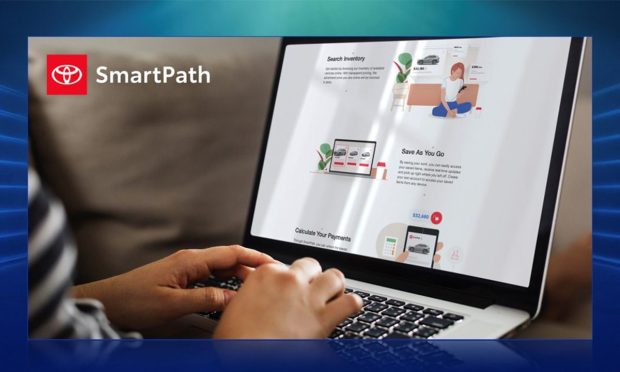Vehicle Brands Offer Car Shoppers a Seamless Experience Online and In-Store

About five years ago, Toyota saw that potential customers who were shopping for cars online were turning to third-party websites to get some information they couldn’t get elsewhere. Toyota sites, regional sites and dealer sites were not always consistent across the country and didn’t always include information about current vehicle inventory and pricing.
Toyota set out to provide dealers and consumers with an alternative. About three years later, in April 2020, it launched SmartPath, a platform that can be accessed through Toyota.com and dealer sites. It enables shoppers to do everything from viewing inventory to purchasing or leasing a vehicle. The site works seamlessly with the in-dealership experience, so customers can go a dealer at any point in the process and pick up where they left off online.
“It was actually a request from our dealer body, through dealer council, through dealers, asking us to help them provide the technology that they need to really provide that guest experience the consumer five years ago was hoping for, asking for, but today’s consumer is demanding it,” Timothy Bliss, general manager of Retail Transformation at Toyota Motor North America, told PYMNTS.
Complete Solutions Covering Both Online and In-Store
In December, Toyota announced that SmartPath has been adopted by more Toyota dealers than any of the third-party alternatives. A similar platform for Lexus, called Lexus Monogram, is now in pilot mode and is expected to go live in April.
Bliss outlined some key features that have drawn dealers to the platforms: they’re designed specifically for Toyota and Lexus dealers and guests; they’re complete solutions covering both online and in-store; they’re integrated with the brands’ financial services arms; they’re integrated with the brands’ tier-one websites (Toyota.com and Lexus.com), so they bring the dealers more web traffic; and they’re secured by Toyota’s embedded cybersecurity.
For consumers, the platforms provide an online experience in which they can do everything from viewing real-time inventory and actual prices through selecting a vehicle, adding accessories, selecting a lease or finance, seeing the real payment with local taxes and fees, adding voluntary protection products, applying for credit and receiving a decision.
The information is shared with the dealer to finalize the deal. The guest can choose to do that in-store or online. Bliss said some dealers use screensharing to finalize the deal and then send the contracts. The customer can sign the contracts electronically or, in states that require a wet signature, in person.
“As we continue to live through this pandemic, we’re seeing more and more guests do more and more steps online,” Bliss said. “They are really doing more in terms of adding accessories, looking at voluntary protection products, trying to really get all that stuff that they can do on their own, at their own time. We’re seeing that getting more and more popular, and then when they are coming into the dealership, they’re looking for that to be as quick as possible.”
Providing an Experience as Well as a Product
Toyota was working on SmartPath well before the pandemic and always planned to take it out of pilot and go live in April 2020. When the pandemic hit in March 2020, the company had the platform ready to go.
Since then, as the pandemic accelerated society’s digital transformation, Toyota has continued to add to the platform to meet the needs of dealers and shoppers. For example, in 2021 it expanded the platform to include not only new and certified used Toyota and Lexus vehicles, but also used vehicles of other brands that are being offered by Toyota stores.
Bliss said Toyota developed SmartPath in-house because it wants the platform to be a differentiator for the brand. Its research found that both shoppers and dealers want a digital solution, and the company wants to provide one that specifically meets their needs.
“We know the product is key, but the experience is also, in many cases, just as important as the product,” Bliss said. “As the product keeps getting more and more competitive across the industry, we need to look at every single opportunity to really differentiate ourselves, and we know that experience can be that.”
